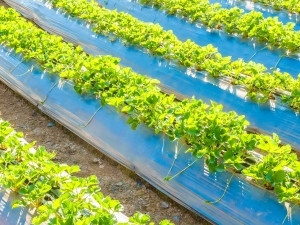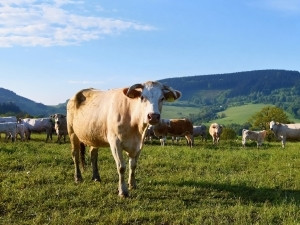
As the world population continues to grow, income levels are rising in growth geographies, causing a switch to protein-rich foods requiring a profound growth in livestock production. The 2015 GAIN Report (Global Agricultural Information Network) noted: "Over the past two decades, steady economic growth and increased average income in South Africa resulted in the rapid expansion of meat consumption... South Africa consumes about 2.9 million tons of poultry, beef and pork meat per annum, with poultry meat consumption representing more than 60% of total meat consumption."
By 2050, annual cereal production will need to rise to about 3 billion tons from 2.1 billion today, and annual meat production will need to rise by over 200 million tons to reach 470 million tons(1). Faced with the global challenge of establishing a sustainable supply of food, animal and fish farms must substantially increase efficiency and performance, while making the most of the limited resources available.
According to Jane Thomson, Managing Director of Softworx (an Infor partner), the key to ensuring sustainable production is an efficient and reliable value chain. "To achieve efficiency in the agricultural value chain, the four Ds of agri-tech must be implemented: depth, dispersed operations, development and drive."
To achieve depth, a micro-vertical application of technology is required. "To deliver efficiency improvements on this scale, technology enhancements across the food industry will need to be drastic. This spans agriculture, aquaculture and the supply chain throughout farming, food production and processing," believes Thomson. "Technology will be a critical part of these developments, but it needs to be closely aligned to the idiosyncrasies of the specific industry segment within food manufacturing. Deep, specific expertise is the order of the day to drive efficiencies."

This need for such focused know-how led Infor to develop and continually invest in its micro-vertical strategy, while creating a Micro-Vertical Specialisation Programme for the Infor Partner Network (IPN). "This enables partners to combine industry-specific strengths and capabilities with Infor solutions in deep, niche markets," says Thomson. "In fact, Softworx is working with one of the largest South African poultry processing plants to improve efficiencies in this micro-vertical."
Marine Harvest, the world's largest producer of farmed salmon, is utilising this technology for greater efficiency. "The integration of ERP and supply chain planning has enabled Marine Harvest to improve visibility into future demand from three to six weeks to up to three years. That is the basis of a huge leap in efficiency and one that can be easily applied to agriculture."
At any point in food production, variation means additional costs and delays. Therefore, dispersed operations are a crucial part of a drive for efficiency. "Agricultural producers will need to impose standardised procedures and processes throughout operations that can span the globe," says Thomson.

Seaboard Foods, an Infor customer, needs to maintain visibility and consistency across 6.5 million pigs per year. The pigs are raised on farms specialised for the pigs' stage in life, such as sow farms, nursery farms and finisher operations - and all of these facilities are linked to a computer network to monitor the environment. "To ensure consistency across so many variables, in different locations, cloud technology is vital not only to ensure that the same systems are implemented across the enterprise, but that they are all kept consistently up to date too."
The need for adjacent innovation requires development. The mud, rain and raw nature of agriculture is proving to be a hotbed of innovation for some of the most forward-thinking, cutting-edge technologies within manufacturing. "Farmers and producers have recognised that implementing technology out in the fields, in some cases in the very soil itself, can have incredible results. As a whole, smart agriculture will be worth around $18 billion by 2022, growing at a rate of approximately 13% per year. This level of opportunity will drive huge waves of innovation," confirms Thomson.
Infor customer Fullwood manufactures a range of milking technologies, including sophisticated automated milking solutions that incorporate laser sighting technology. Fullwood places identity tags on each cow and uses the latest herd management software to provide intricate details of each cow's milking habits. This is vital information, as Spencer Davis, Director, Fullwood, explains: "Understanding the characteristics of an individual cow's milking patterns is pivotal in maximising the production of milk from a herd." Locally, Softworx is assisting two of South Africa's largest dairy producers in the processing of raw milk into various dairy products.

Elsewhere, agri-tech innovation has led to vertical farms in urban cities such as Singapore, solar powered drip-irrigation of fields, drone-controlled crop management and wireless surveillance of crops. "The number one tool for an agricultural producer is now his or her mobile phone," adds Thomson.
Pulling together the need for deep expertise, the ability to cover dispersed operations and a drive to develop innovation, producers and farmers are now looking to established and new names alike when it comes to choosing technology partners to drive it all forward. "The increased demand for food will be one of the key trends shaping business and society in the next 20 years," concludes Thomson. "Agriculture and technology must collaborate and develop at a phenomenal pace if the challenges of this demand are to be met."
View the article here.
(1) http://www.fao.org/fileadmin/templates/wsfs/docs/expert_paper/How_to_Feed_the_World_in_2050.pdf
Share